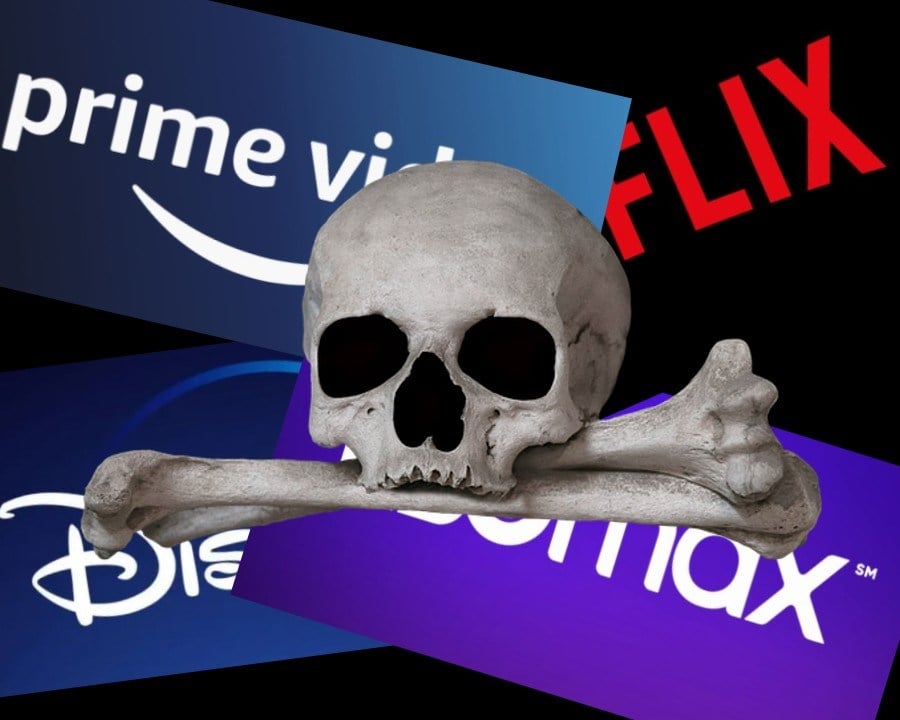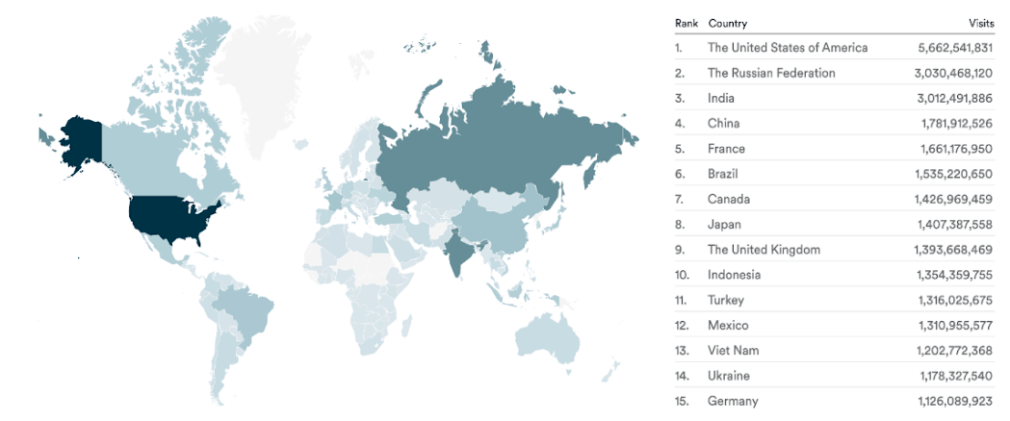-
chevron_right
The U.S. Tops the Manga Piracy Chart, While Iran Leads in Music Piracy
news.movim.eu / TorrentFreak · Monday, 12 February - 10:49 · 2 minutes
 Despite the growing availability of legal options, online piracy remains rampant. Every day pirate sites and services are used by millions of people worldwide.
Despite the growing availability of legal options, online piracy remains rampant. Every day pirate sites and services are used by millions of people worldwide.
New data released by UK-based piracy tracking company MUSO shows that pirate sites remain very relevant. And people have no trouble finding them either.
229 Billion Pirate Site Visits
A few weeks ago it was revealed that video piracy continued to grow in 2023. A new report shows this uptrend is visible across all other content categories, reaching 229 billion platform visits in 2023, a 6.7% increase compared to a year earlier.
Music and software piracy are by far the smallest categories, but these saw the largest relative piracy increases. The number of visits to music and software piracy sites grew 13.4% and 14.1% respectively over the past year.
TV piracy remains the most popular among consumers, however, accounting for almost half of all piracy traffic with 103.9 billion visits in 2023. The publishing category takes second place with 63.6 billion visits, followed by 29.6 billion film piracy visits.
| Category | Visits | Market Share | Growth YoY |
|---|---|---|---|
| Data: Muso.com | |||
| TV | 103.9 billion | 45.4% | 4.2% |
| Publishing | 63.3 billion | 27.6% | 7.4% |
| Film | 29.6 billion | 12.9% | 6.5% |
| Music | 17.1 billion | 7.5% | 13.4% |
| Software | 15.2 billion | 6.6% | 14.1% |
Manga
In recent years, the publishing category has seen a sharp traffic increase. This rise is mostly driven by manga comics, which have drawn more pirate site visits than film piracy in recent years.
“The global phenomenon of Manga, Japanese comic book and graphic novels, has driven publishing piracy to new heights in recent years, overtaking film piracy and the second most pirated medium in 2020,” MUSO writes .
Manga now dominates the publishing category. While traditional book publishers have been very active on the anti-piracy front recently, more than two-thirds of all ‘publishing’ pirates (69.2%) are drawn to manga sites.
The United States is in the lead as the main source of traffic to manga sites. With 13% of all visits, it leaves all other countries, including Japan, trailing behind.
TV Piracy
Looking at the TV category, we see that the United States remains the top traffic driver overall. With more than 14 billion visits it puts runner-up Russia in distant second place.

The TV category also includes anime content which, unlike our yearly overview , is included in MUSO’s top 10 list of most viewed TV series. The Last of Us remains the winner, however.
In recent years TV piracy has been dominated by streaming sites, which represent direct competition for Netflix and other authorized platforms. These pirate streaming sites now make up 96.3% of all traffic, marginalizing torrent sites and download portals.
Iran, India and Russia
It’s no surprise that the United States is leading in the TV and Publishing categories due to the sheer size of the population and readily available broadband access. However, this dominance doesn’t apply to all categories.
Looking at movie piracy, India is the clear winner by a wide margin ( 30%! ), according to MUSO’s data. Interestingly, visits to this category declined sharply in the second half of 2023 for reasons that are not immediately clear.
In the music category, Iran is the surprising leader with 11.8% of music piracy visits, followed by India and the U.S. as runners-up. This includes traffic to stream-ripping sites, download portals, and streaming sites.
Finally, MUSO attributes most software piracy to Russia, with the U.S. and China closely behind. This includes traffic to app piracy sites. Needless to say, all software piracy takes place through direct download portals.
From: TF , for the latest news on copyright battles, piracy and more.
 Last week, new data published by piracy tracking firm
Last week, new data published by piracy tracking firm

 Despite the widespread availability of legal options, online piracy remains rampant. Every day pirate sites are visited hundreds of millions of times.
Despite the widespread availability of legal options, online piracy remains rampant. Every day pirate sites are visited hundreds of millions of times.
 Over the past 18 years, we’ve seen our fair share of piracy studies and research, but a finding presented this week ‘obviously’ stands out.
Over the past 18 years, we’ve seen our fair share of piracy studies and research, but a finding presented this week ‘obviously’ stands out.

 Piracy tracking firm MUSO aims to help rightsholders convert pirates into paying customers. This is a noble goal and the UK-based company doesn’t shy away from taking a stand.
Piracy tracking firm MUSO aims to help rightsholders convert pirates into paying customers. This is a noble goal and the UK-based company doesn’t shy away from taking a stand.


 As the first major legal subscription streaming service on the Internet, Netflix paved the way for a streaming revolution.
As the first major legal subscription streaming service on the Internet, Netflix paved the way for a streaming revolution.
 There is little doubt that, for many people, on-demand streaming services have become the standard for watching TV-shows.
There is little doubt that, for many people, on-demand streaming services have become the standard for watching TV-shows.


